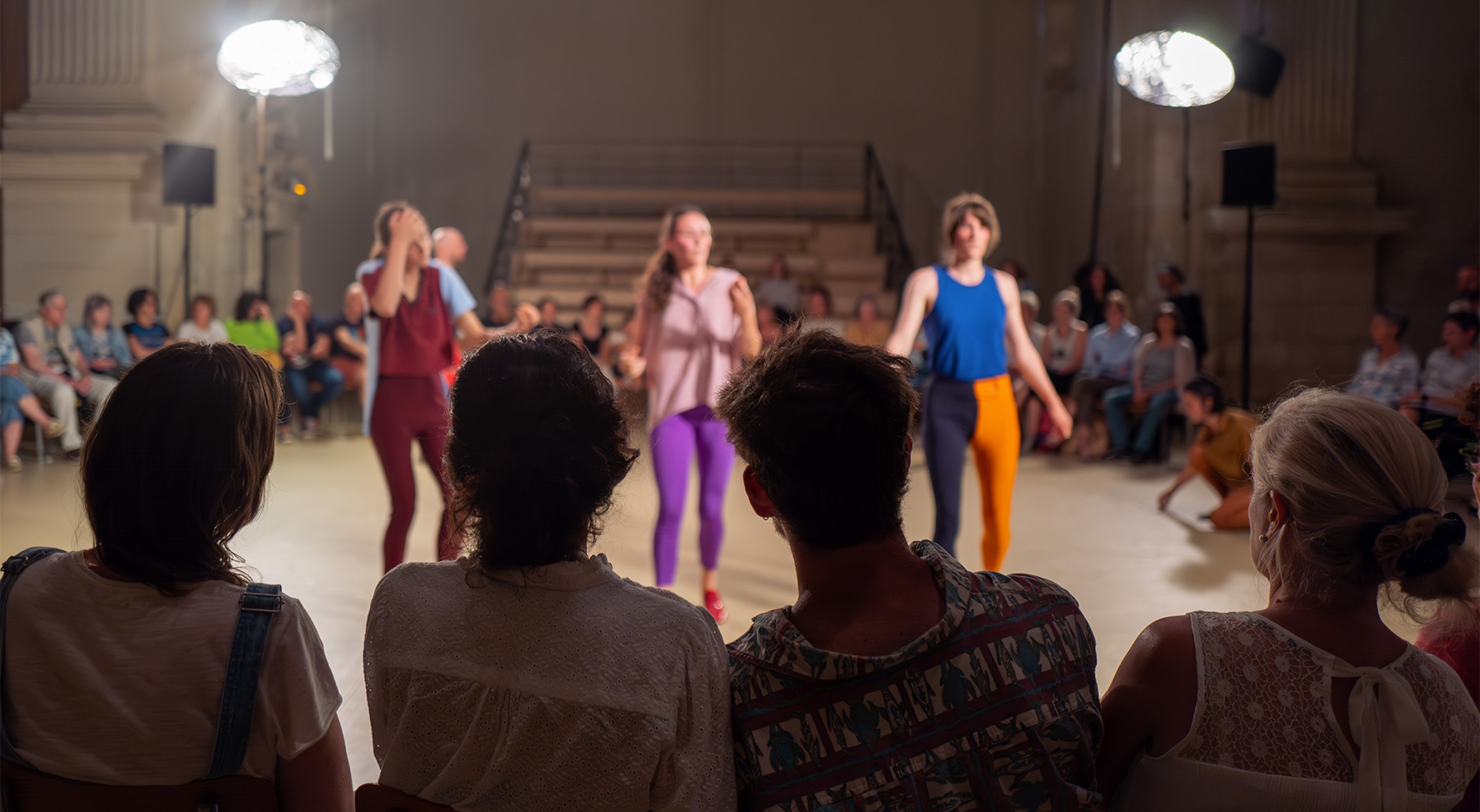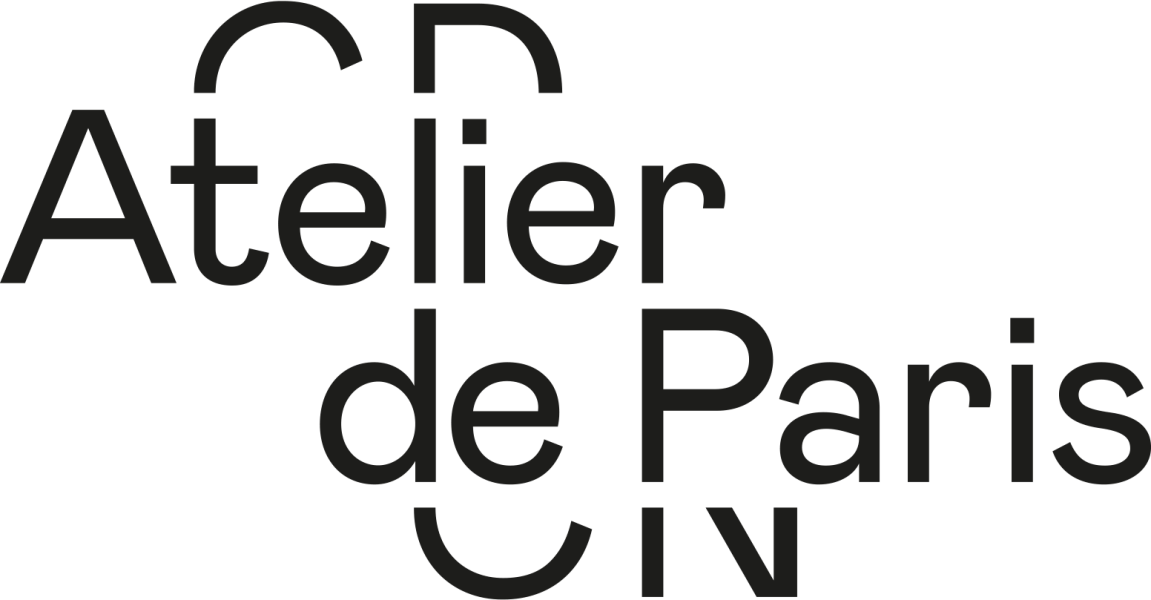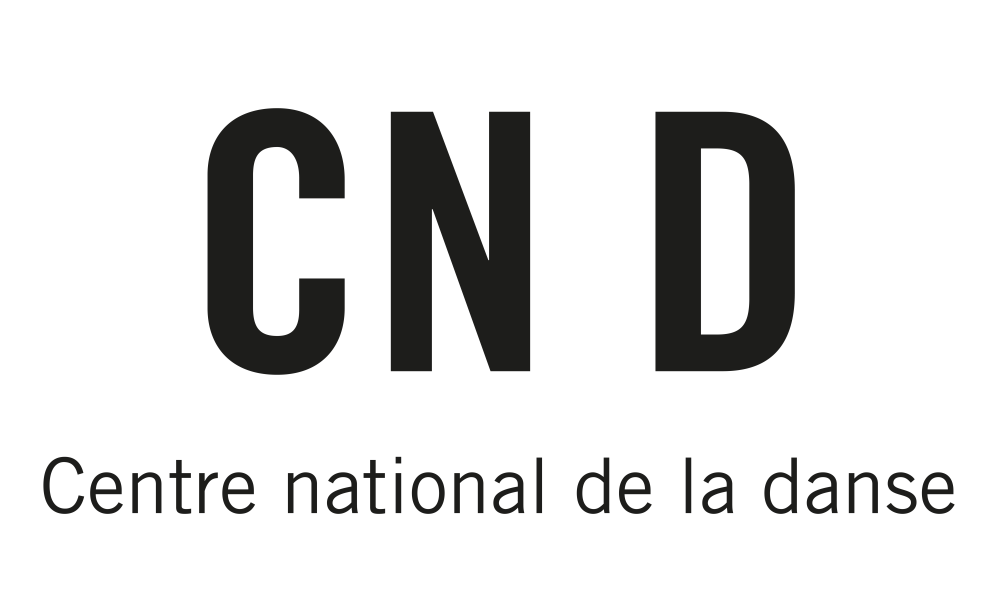Madeleine Fournier
Branle
novembernov 17 – 18
decemberdec 7 – 9
Choreography, Madeleine Fournier
Performers, Mathilde Bonicel, Madeleine Fournier, Sonia Garcia,
Flora Gaudin, Johann Nöhles, Marie Orts
Music, Marion Cousin, Julien Desailly
Assistant, Jérôme Andrieu
Space, Madeleine Fournier, Nicolas Marie
Lighting, Nicolas Marie
Transmission bourrée 2 temps, Solange Panis
Costumes, Valentine Solé
Make-up artist, Lou Thonet
Sound engineer, Vincent Domenet
Stage Manager, Leslie Vignaud
Production administrator, Margot Guillerm
Project support, Teresa Acevedo
Production Assistant, Louise Alix
Thanks, Clément Vercelletto, Elisa Trebouville, Louis Jacques, Myriam Djemour
Produced by ODETTA
Coproduction Chorège - CDCN Falaise Normandie as part of the "accueil-studio" scheme supported by the French Ministry of Culture; NEXT festival; Charleroi Danse - center chorégraphique de Wallonie- Bruxelles; CCN2-Centre chorégraphique national de Grenoble as part of the "accueil studio" scheme; Mille Plateaux - CCN La Rochelle as part of the "accueil-studio" scheme supported by the French Ministry of Culture, Atelier de Paris / CDCN ; CND Centre national de la danse (Pantin) ; 3 bis f - Centre d'arts contemporains d'intérêt national à Aix-en-Provence - artist residencies - performing & visual arts ; Le Carreau du Temple - Établissement culturel et sportif de la ville de Paris ; Festival d'Automne à Paris ; kunsten centrum BUDA (Courtrai) ; Centre chorégraphique national d'Orléans - Direction Maud Le Pladec
With the patronage of Caisse des Dépôts
The ODETTA company is supported by the Drac Île-de-France / Ministère de la Culture with a multi-year grant.
With residency support from La Soufflerie; La Métive - Artists' residency in Moutier d'Ahun
This project was financed by the Île-de-France region, the city of Paris, Adami and Spedidam.
Madeleine Fournier has been supported since 2018 by Atelier de Paris / CDCN
Co-produced by Atelier de Paris / CDCN; CND Centre national de la danse; Festival d'Automne à Paris
Viewing the ball as an eminent manifestation of the collusion entre music and dance, Madeleine Fournier takes her inspiration from the branle, a popular European dance dating back to the Renaissance. Musicians and dancers alike lead an alchemic ball, a shock-filled stroll, and ballet of the emotions.
Based on the two-step bourrée, a traditional dance from France’s Berry region, Branle weaves a canvas of the to-ing and fro-ing of bodies which, despite never entering into contact with each other, is deeply erotic, loving, and alive. Making use of a joyful play on words in terms of its different meanings as word, verb and its afferent adjective – ébranlé, meaning shaken or rattled –, the choreographer borrows from the world of the ball, exploiting to the full its form, and potential for setting in motion energies and affects. From out of this choreographic archetype of collective dance, she summons up an ancestral memory of the body. The choreographic loop of the basic step, which involves coming close and then moving away, becomes the impulse behind infinite variations on the relationships between the performers. This, in turn, progressively enables emotions to come to the surface, as well as reminiscences, deeply-buried movements, in short, a whole invisible life. As a place for the expression of the creative and destructive forces of the body, and in which our collective sub-conscience becomes apparent, the ball here takes us to the threshold of an unsettling feeling of eternity.
In the same place


